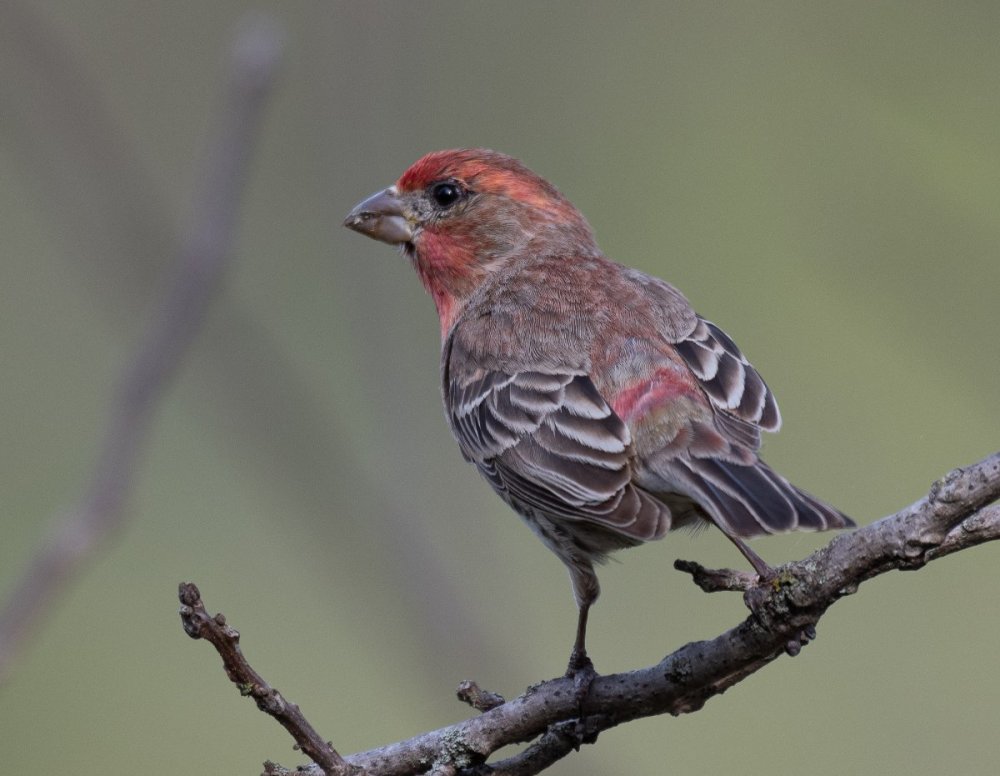Table Of Content

The House finch is a flexible type, hence why it’s common and expanding throughout the US. House finches have streaky brown undersides, but these are not pigmented. The Purple finch’s underside is somewhat streaky, but with brown rather than red. Overall, the Purple finch is the more pigmented and colorful of the two birds (in terms of the male).
House Finch vs Purple Finch: What Are The Differences?
The House finch is definitely more Common than the Purple finch, and you’re more likely to see it, especially if you live in towns or cities. Audubon protects birds and the places they need, today and tomorrow.
Nesting
The nest is placed in a spruce or other conifer, cactus, cliff, building ledge, or other spots with a solid base and some overhanging material. Female House Sparrows are warmer brown above and don't have streaked underparts like female/immature House Finches. Cassin's Finches have a bright red peaked crown, whereas House Finches have an evenly round head that is all red.
Mike Jacobs Always in Season: A vagrant finch makes headlines and tempts birders - Grand Forks Herald
Mike Jacobs Always in Season: A vagrant finch makes headlines and tempts birders.
Posted: Sat, 27 Jan 2024 08:00:00 GMT [source]
What’s the difference between a female House Finch and a female Purple Finch?
In general, Purple finches have long warbling calls, whereas House finches are chirpier. Purple finches are slightly bigger, and they’re often said to be slightly stockier and heavier. Purple finches are still Common, but not as Common as House finches. Partners in Flight estimate that there are around 6.4 million individuals. Current estimates suggest that there are some 267 million to 1.7 billion House finch individuals.
House Finch vs Purple Finch: How to Spot Their Differences

They typically use small twigs, grass, and leaves to create their nests. And while they’re not as easy to tell apart at first glance as the male birds, there are differences in their markings if you look closely. Diving deeper into the physical features, both birds share a thick, conical bill for seed-cracking, but House Finches have a slightly smaller bill compared to the Purple Finch. Purple Finches, however, lack this dark brown streaking, or it’s barely noticeable. The vibrant strawberry-red color of male House Finches is concentrated mostly on the head and chest. You’l see these birds closer to human settlements, such as residential areas or parks.
Range
House Finches also contribute to the avian chorus but with a varied and cheerful chirp. House Finches produce a variety of calls, each serving a specific purpose. These calls are often used for communication between mates, signaling during courtship, or conveying alarm. Individual males may have unique songs that are often complex, with variations in pitch and rhythm. House Finches are highly adaptable foragers as well, but they display versatility in their choice of food sources. They can be found foraging at various heights, including on the ground, in low vegetation, and even at bird feeders.
House Finch vs Purple Finch: How to Tell the Difference
They are attracted to bird feeders and are often a favorite visitor at many backyard bird feeders. They have a diverse diet that includes a variety of seeds, berries, and insects. They are skilled foragers, searching for food among the branches of trees and in the foliage. House Finches also exhibit a direct and somewhat buoyant flight pattern with steady wing beats. Their flight may appear more undulating compared to the slightly more straightforward flight of Purple Finches.
Purple Finches thrive in environments characterized by coniferous and mixed forests. These settings provide them with the dense vegetation and ample tree cover they prefer. When it comes to shape, the Purple Finch and House Finch exhibit subtle but distinguishable differences. The Purple Finch has a slightly larger and stockier appearance compared to the House Finch.
Birding experts Kenn and Kimberly Kaufman write, “Telling a house finch vs a purple finch apart is a common backyard challenge over much of North America. On the males, one of the first things to look for is the pattern on the sides of the body, below the wings. House finch males have dark stripes there (as seen in your photo), while purple finches don’t. So, as a recap, what does the purple finch look like compared to the house finch? The male bird has a pink or rosy red tint on the surface of its whole body, while the male house finch has orange-red feathers only on its head, chest, and shoulders.
In winter, found in a wider variety of habitats, including shrublands, old fields, forest edges, and backyards. Purple Finches are slightly larger with a larger wingspan and somewhat more muscular build. They also have larger heads and necks relative to the rest of their bodies compared to House Finches.
In short, a finch with red head is a house finch, whereas a finch that’s red or rosy on most of its body is a purple finch (for males). When it comes to body shape and size, there aren’t too many differences between a house finch bird and a purple finch. However, the first is usually more slender compared to the second, and they will also have a more sizable head. Both purple and house finches can be found across North America, and both prefer habitats that are coniferous. While there are a wide variety of finch types that exist in the world, these two are among the most common ones in the US and Canada. The main difference between a purple finch and house finch is the color, especially the color of the head and chest in males.
Outdoors column: Purple finch a common sight at winter feeders in Central Minnesota - SC Times
Outdoors column: Purple finch a common sight at winter feeders in Central Minnesota.
Posted: Fri, 28 Jan 2022 08:00:00 GMT [source]
The song pallet of house finches is limited to a warbling song composed of short notes and that can last for up to 3 seconds. Compared to purple finches, house finches sound rougher and less melodic. The call note can be abrupt and sharp and can sometimes sound like a ‘cheep’. It’s common for house finches to make this sound even as they fly. The main difference between a house finch and purple finch is their coloring.
House finch females are known to be dominant over the males, but the females incubate and brood the young while the male feeds. House finch males also engage in courtship feeding, meaning they bring the females food during pair formation and the breeding season. House finches rarely migrate, though some northern colonies will head south in winter. House finch migration depends on the weather, whereas Purple finches tend to migrate every year.
But that’s only the start of the confusion around these two doppelgangers. A red and brown bird at your feeder might be either one throughout much of the United States. House Finches are common and widespread across most of North America, including Hawaii. Meanwhile, Purple Finches nest in Canada, along the Pacific, and in the Northeast.
Since the Purple Finch uses those long wings to fly from boreal forests in Canada all the way to the southern USA, it can probably fly faster than the House Finch. It probably also flies for longer periods of time than House Finches. The exact flight speeds of these two species have never been measured but are probably similar to flight speeds of other small birds that live in similar, open and semi-open habitats. Adult males are rosy red around the face and upper breast, with a streaks down the belly and on the flanks. Females/immature males are brown overall with blurry streaks down the belly. You’re quite unlikely to see Purple finches if you live in the city, whereas House finches are common in urban environments.

No comments:
Post a Comment